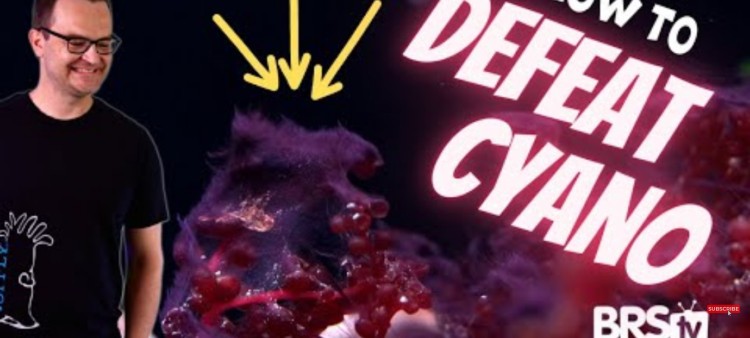Give Red Saltwater Tank Slime the Boot with the Right Tools!
- Jun 19, 2022
- Anshika Mishra
- 215 0 0

If your tank hasn't had a Cyano outbreak yet, it will. It might just be a small purple patch or it could cover your entire tank.
It can take a few weeks, but it's really easy to get rid of. Here's how:
What is Cyano Bacteria?
Even though it looks like algae, Cyanobacteria are photosynthetic aquatic bacteria. If you visit lakes in the summer, you've probably seen Cyano blooms and the warning signs that tell you not to go swimming.
Cyano colors range from purple to green, although in aquariums, it's mostly purple.
While it is a nuisance, it is not dangerous to you to your live stocks. But, if it does cover your photosynthetic corals, it can starve them.
How to identify Cyano Bacteria?
For beginners identifying Cyano backers can be a bit tricky. And it is easy to confuse them with the much-dreaded Dinoflagellates.
However, there are three easy ways to identify Cyanobacteria.
- Color: If it is purple, it is probably Cyano
- Growth Pattern: It covers everything like a mat, rocks, and sand, it doesn't matter. If it spreads out like a yoga mat in a day or two, it is probably Cyano.
- It Detaches Easily: Even though Cyano does cover everything, there are no roots to it. So, if you attack it with a turkey baster or a power head, it will come right off whatever it's covering.
What Causes Cyano Bacteria?
Some say it is caused by a high nutrient system, while others say the primary culprit is low-nutrient systems. But, in reality, it appears in both times.
However, we do know that in nature, Cyano Bacteria usually appear in the warm summer months in Stagnant water. And it always starts in low-flow areas of the tank.
How to Treat Cyano Bacteria?
There are only two steps or treating Cyanobacteria. Step one, increase the flow. Because Cyanobacteria is very loosely attached to rock, sand, or corals, it blows off easily.
1. Flow
So, by increasing the flow in Cyano-prone areas, it will just disappear because it doesn't have the strength to hold on. You can do this by turning up the flow of your wave maker, moving your wave maker to a new location so it hits those dead spots, or by adding a second power head or wave maker.
The key to this work is to eliminate the dead spots as much as possible
2. Manual Removal
Since you have already increased the flow in step one, the newly freed Cyanobacteria will float around in the water column until it gets sucked into your mechanical filtration.
95% of the time, that two-step will solve the problem.
But, it is not a one-time solution. It can take several weeks to a couple of months. Every single day you'll need to blast the Cyano that appears with the Turkey baster.
After several days or a couple of weeks, you might feel that it is not working, but it is working.
How to Increase Your Success Rate?
Here are two tips:
Use a 100 Micron Filter Sock and Change it Daily
That very fine filter sock will clog quickly, but it will catch a lot of Cyanobacteria, and replacing that filter sock daily will remove as many Cyanobacteria from your system as possible.
Dose Daily With Beneficial Bacteria
Experts believe that Cyanobacteria take over when beneficial bacteria are lacking in your system. So, adding beneficial bacteria may help by out completing that Cyanobacteria for valuable real estate in your tank.






About author